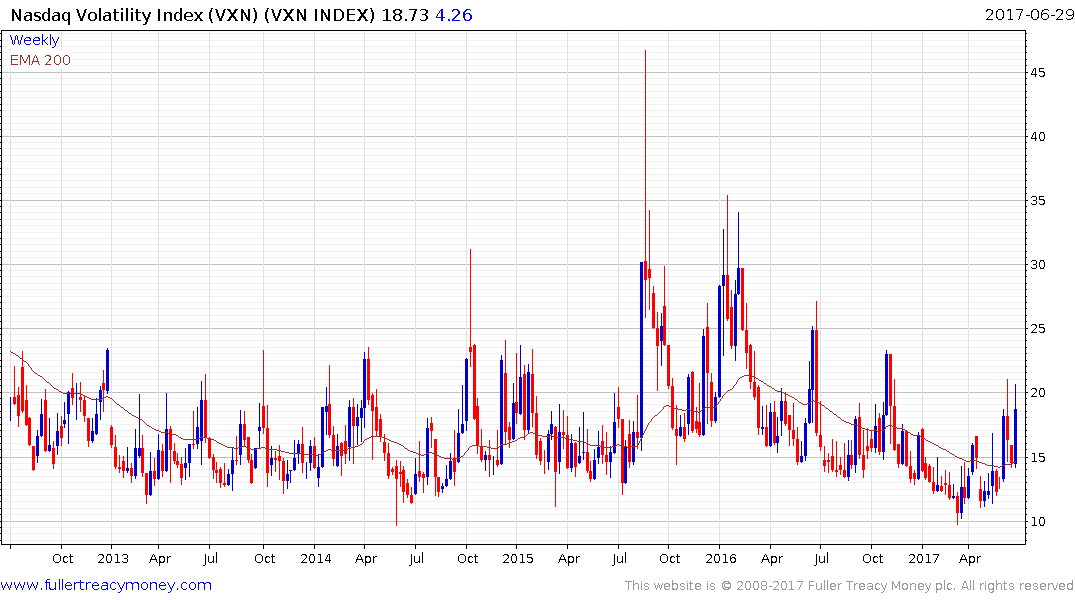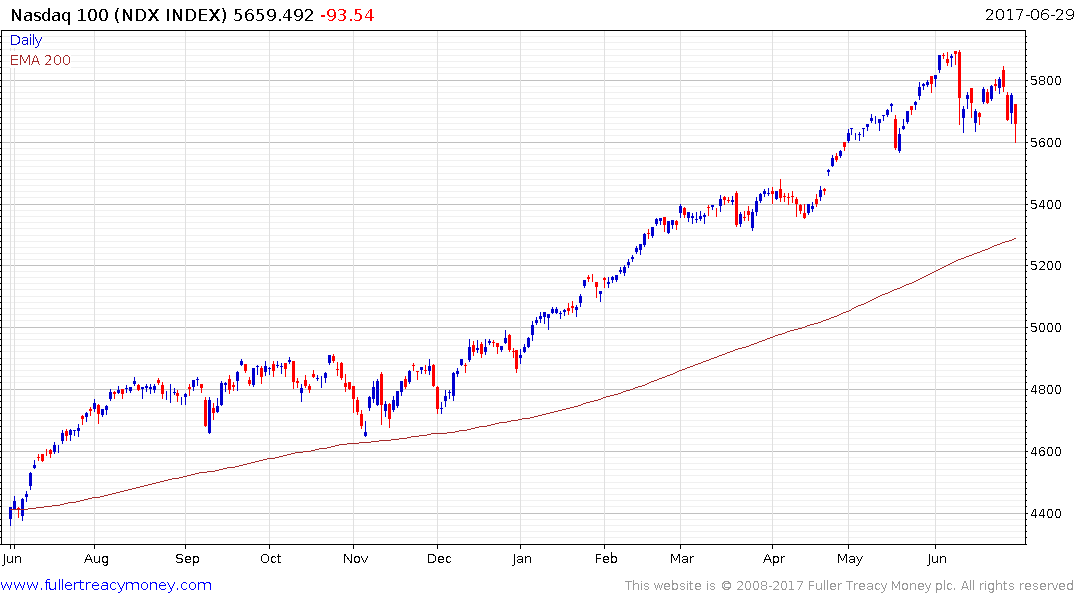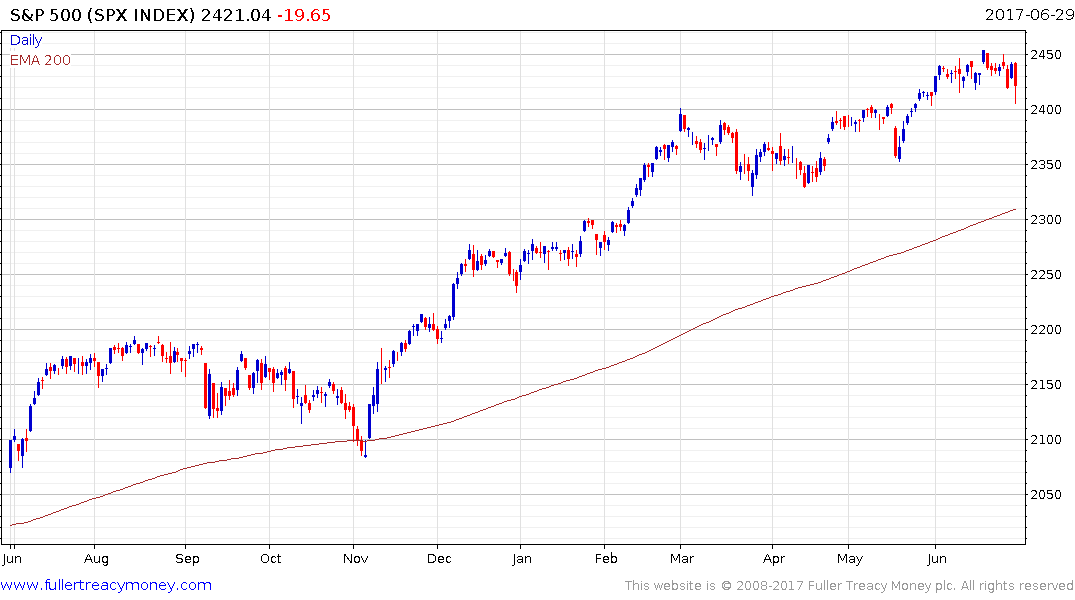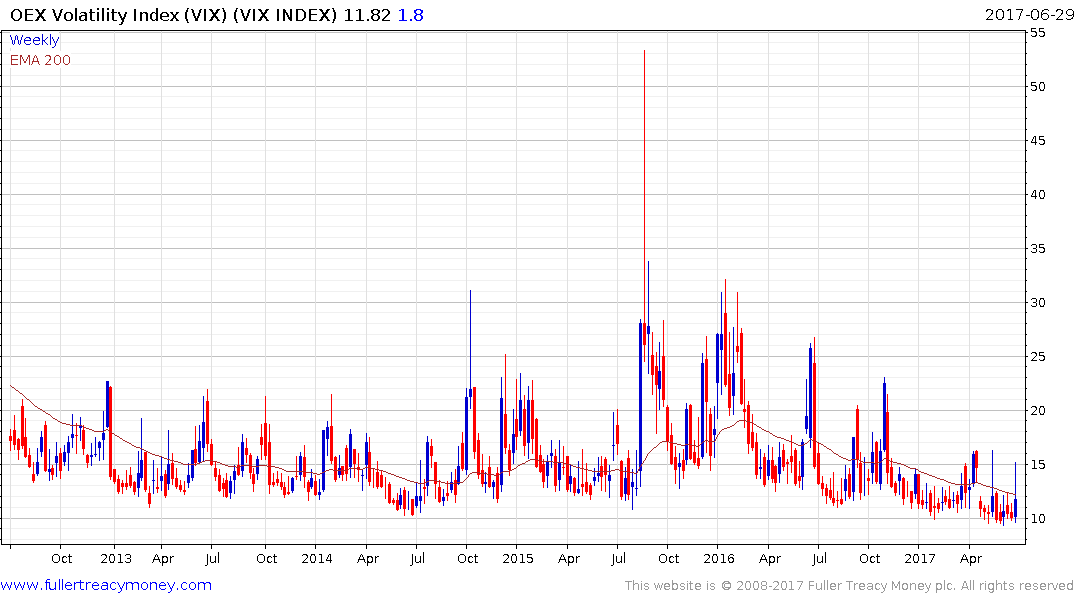Nasdaq Unhinged From Everything as Volatility Fits Won't End
This article by Oliver Renick and Elena Popina for Bloomberg may be of interest to subscribers. Here is a section:
“Everyone talks about the VIX, but there are undercurrents of significant volatility in the market,” Joe Sowin, head of global equity trading at Highland Capital Management LP, said by phone. “There’s a lot more volatility in tech this month and that’s in part due to stretched P/Es, positioning and breadth that isn’t good.”
The VIX wasn’t its usual docile self, either, on Thursday. The measure jumped 3.5 points to 13.56, the highest since mid- May. Losses in consumer and health-care stocks sent the S&P 500 down 1.1 percent to 2,412.05.
Other measures of tech turbulence tell a similar story. The CBOE NDX Volatility Index has averaged 15.1 in June and has repeatedly touched levels this month that represent its biggest gap to S&P 500 implied volatility, or the VIX, since the financial crisis.
Excess volatility in technology megacaps is partly a function of how fast they have run up. While the S&P 500 has tripled since markets bottomed in March 2009, gains in the Nasdaq 100 are approaching fivefold. After rising as much as 21 percent this year, valuations in the gauge sit 30 percent above their bull market average.
As was the case on June 9 when tech shares dropped 2.7 percent, the biggest laggards in the group Thursday were semiconductor stocks. KLA-Tencor Corp., Advanced Micro Devices, and Applied Materials Inc. weighed the most, with losses of more than 4 percent.
To Peter Cecchini, senior managing director at Cantor Fitzgerald in New York, that could mean that investors are second-guessing expectations for economic growth.
“A lot of these names are cyclical tech -- when you’re looking at economic slowdowns the semiconductors always get whacked first,” he said by phone. “Look at the durable goods data, it was a mess. Maybe these cyclical names are telling us something.”
There has been a major disconnect between volatility on the S&P 500 and the Nasdaq-100 over the last three months with the former holding at abnormally low levels while the latter has been trending higher.

Despite the fact the Nasdaq-100 has been relatively resilient, until June 9th at least, single stock volatility has increased and this has been reflected in the higher reaction lows evident on the NDX Volatility Index since March. The measure is now testing the progression of lower rally highs and a sustained move above 20 would suggest a somewhat deeper reaction for the stock index.

As of today the Nasdaq-100 has posted both a lower high and lower low following the June 9th peak so it has some work to do if demand dominance is to be reasserted. The most likely scenario remains mean reversion. This reaction is already larger than that posted between March and April and the best case scenario is that it looks more like that posted between August and December.

The S&P500 has been buoyed by the banking and diversified financial sectors and bounced from its intraday lows and the upper side of the underlying range. However a sustained move above 2450 will be required to signal a return to demand dominance.

The VIX Index held approximately half of its initial surge and as a result the medium-term progression of lower rally highs has held. A move above 16 would likely signal the onset of a deeper corrective phase.


